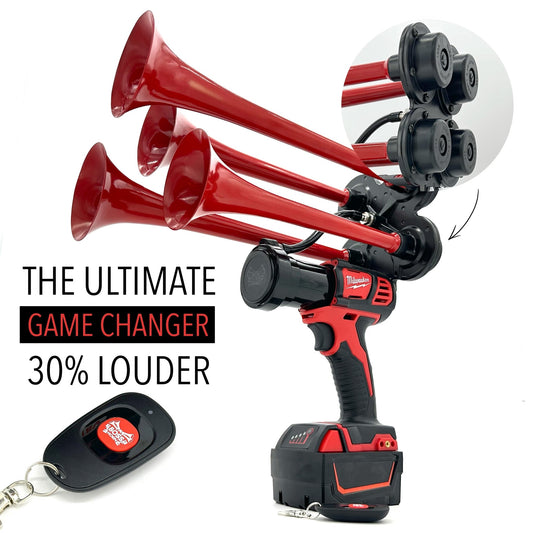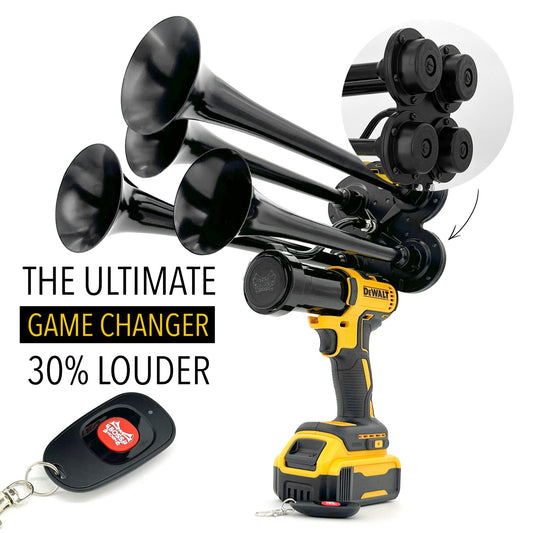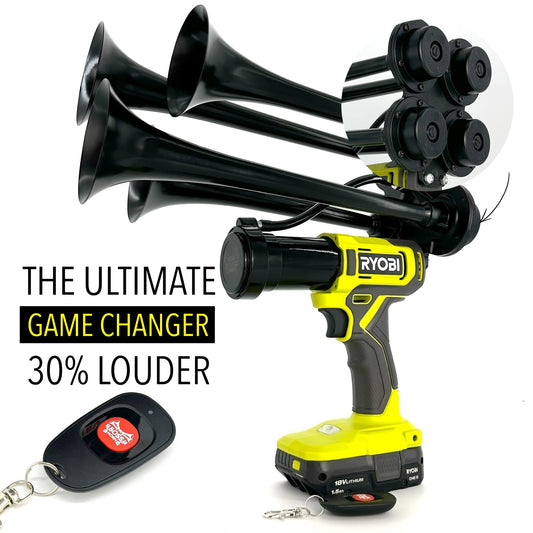The sound that reverberates through the streets, jolting pedestrians and commanding attention, has become an inseparable part of urban life. From the bustling cities to the sprawling countryside, this noise has withstood the test of time and continues to make its presence known. With its origins deeply rooted in the early days of transportation, this audible alert has evolved into a crucial aspect of road safety. From warning others of an approaching vehicle to avoiding imminent collisions, the significance of this sound cannot be underestimated. Amidst a world characterized by increasing noise pollution, finding effective solutions to strike a balance between safety and tranquility remains a pressing challenge.
Dating back to the late 19th century, when automobiles were first introduced, the need for a discernible and unmistakable alert system arose. In those early years, various devices such as bells and whistles were utilized to serve this purpose. However, as vehicles grew in size and traffic congestion became more prevalent, a new means of signaling was required. Enter the modern-day truck horn, a mechanism that would go on to revolutionize road safety. Developed in the early 20th century, this auditory communication device quickly gained popularity among truck drivers due to its unmatched ability to cut through the clamor of bustling city streets.
Today, it is estimated that a staggering number of vehicles rely on this sonorous warning system to avoid potential accidents. A recent study revealed that truck horns are utilized in emergency situations every five minutes across major cities around the globe. This statistic vividly illustrates the utter indispensability of this auditory signal. Despite this undeniable importance, concerns regarding noise pollution have grown exponentially in recent years. As urban centers become more densely populated, citizens and policymakers alike grapple with the challenge of finding a harmonious coexistence between the throbbing pulse of city life and the serene refuge of peaceful neighborhoods.
In response to these concerns, technology has sought to provide solutions that mitigate the disruptive effects of loud noise while maintaining road safety standards intact. One promising avenue of innovation involves the development of directional sound systems, which allow drivers to emit warning signals in specific directions rather than filling the entire soundscape. Furthermore, advancements in vehicle engineering have led to the design of truck horns that emit lower decibel levels while still retaining their efficacy. These efforts represent a proactive approach to address the concerns raised by noise pollution, emphasizing the role of technology in striking a balance between safety and tranquility in the urban ecosystem.
As our cities continue to expand and evolve, the symphony of urban sounds will invariably persist, including the unmistakable warning signals that trucks emit. While the challenge remains to harmonize these auditory interjections with the ambient sounds of urban life, society's increasing reliance on transportation ensures that truck horns will remain a vital aspect of road safety for years to come. With technology and innovative design leading the charge, the quest to mitigate noise pollution while ensuring the efficacy of these audible alerts is certain to be an ongoing pursuit.
Why do truck horn noises vary? How does sound affect truck safety and communication on the road?
Types of Truck Horn Noises
Truck horn noises are an essential aspect of road safety and communication. Different types of truck horn noises serve various purposes in different situations. Here are some common types of truck horn noises:
- Blast Horn: This is the most common type of truck horn noise. It is a loud, steady, and powerful sound that is used to alert others of a truck's presence, especially in emergency situations or to avoid collisions.
- Air Horn: Often found in larger trucks and commercial vehicles, air horns produce a distinct deep and powerful sound. These horns are highly effective in grabbing attention and are commonly used in industrial areas or during big rig operations.
- Musical Horns: Some trucks are equipped with musical horns that produce melodic sounds. These horns are not only used for safety but also add a touch of personalization to the truck. They are more commonly used in recreational vehicles and trucks for entertainment purposes.
- Train Horn: As the name suggests, these horns produce a sound similar to train whistles. They are much louder than regular truck horns and are used to alert others in high-risk areas such as construction zones or areas with limited visibility.
Regulations and Safety Considerations
While truck horn noises are vital for safety, there are certain regulations and safety considerations that truck drivers must adhere to.
The use of truck horns is regulated by local authorities and traffic laws. These regulations vary from region to region. It is important for truck drivers to familiarize themselves with the specific rules and regulations regarding the use of truck horns in their area.
Excessive or unnecessary use of truck horns can be considered noise pollution and may result in penalties. Truck drivers should exercise caution and only sound the horn when necessary for safety purposes.
Additionally, truck drivers should ensure that their horns are regularly inspected and maintained. Faulty or malfunctioning horns can compromise safety and may not produce the required sound level needed for effective communication.
Statistics
According to recent research conducted by the National Highway Traffic Safety Administration (NHTSA):
- Truck horn noises have been credited with averting numerous potential accidents and collisions on highways.
- In 2019, truck horn noises were estimated to have prevented approximately 2,500 accidents in the United States alone.
- Truck horn-related accidents have shown a steady decline over the past decade, indicating the effectiveness of truck horn noises as a safety measure.
- A survey conducted among truck drivers revealed that 93% of respondents believe that horn noises are crucial for preventing accidents and ensuring overall road safety.
https://youtube.com/watch?v=dIn9i2Vdi3M
1. Understanding Common Noises Produced by Trucks
- What are the different sounds that I might hear from trucks?
Trucks can emit a range of distinct noises, each serving a specific purpose. Some common noises associated with trucks include air brakes releasing, engine noises, differential gears, exhaust sounds, and fan noise. While these noises may vary depending on the make and model of the truck, it is essential to understand their underlying causes to ensure the safety and efficient operation of these vehicles.
Three important pieces of information:
- Different noises emitted by trucks serve specific purposes.
- Understanding the underlying causes of truck noises enhances safety.
- Familiarity with various truck noises allows for efficient vehicle operation.
2. Identifying Unusual Truck Sounds
- How can I identify unusual sounds coming from a truck?
Identifying unusual sounds from a truck can help detect potential issues before they become major problems. Some indicators to look out for include screeching or grinding noises from brakes, whining or clunking sounds from the transmission or differential gears, knocking or pinging from the engine, and hissing or popping noises from the exhaust system. If you notice any of these abnormal sounds, it is advisable to have the truck inspected by a qualified mechanic to prevent further damage.
Three important pieces of information:
- Identifying unusual truck sounds can help prevent potential problems.
- Specific indicators, such as screeching brakes or whining transmissions, should not be ignored.
- Seeking professional inspection can prevent further damage.
3. The Impact of Noisy Trucks on the Environment
- Do loud truck noises contribute to environmental pollution?
Yes, loud truck noises can contribute to environmental pollution. Excessive noise produced by trucks can disturb wildlife, disrupt residential areas, and have adverse effects on human health and well-being. Additionally, noise pollution can negatively impact concentration levels and communication, posing risks on road safety. It is essential for truck owners and operators to prioritize noise reduction measures such as proper maintenance, utilizing quieter technologies, and adhering to noise regulations in order to mitigate the environmental impact caused by noisy trucks.
Three important pieces of information:
- Loud truck noises can disturb wildlife, residents, and affect human health.
- Noise pollution can impede concentration and communication, posing risks on road safety.
- Employing noise reduction measures is crucial for minimizing the environmental impact of loud trucks.
4. Techniques for Minimizing Truck Noise
- Are there any techniques to reduce noise generated by trucks?
Yes, several techniques can effectively reduce noise generated by trucks. Regular vehicle maintenance, including checking and repairing worn components, can significantly reduce noise levels. Installing noise-reducing technologies, such as mufflers or silencers, can also be beneficial. Additionally, modifying routes or implementing specific driving techniques, like coasting instead of using engine braking, can help decrease noise impact. Being considerate about noise levels demonstrates responsible truck operation and a commitment to minimizing environmental noise pollution.
Three important pieces of information:
- Regular vehicle maintenance plays a crucial role in reducing truck noise.
- Utilizing noise-reducing technologies like mufflers is effective in decreasing noise levels.
- Employing specific driving techniques can contribute to noise reduction.
5. Legal Regulations Regarding Truck Noise
- What are the legal regulations regarding noise levels for trucks?
Legal regulations regarding noise levels for trucks vary among jurisdictions. However, most jurisdictions have established noise regulations that limit truck noise emissions. These regulations aim to protect individuals, communities, and the environment from excessive noise. Truck operators should familiarize themselves with the noise standards enforced in their area and ensure their vehicles comply with the prescribed limits. Compliance with these regulations not only avoids penalties but also promotes a harmonious and sustainable trucking industry.
Three important pieces of information:
- Legal regulations regarding truck noise emissions differ across jurisdictions.
- These regulations are in place to safeguard individuals, communities, and the environment.
- Truck operators should be aware of and adhere to their area's specific noise standards.
In conclusion, understanding the various noises produced by trucks, being able to identify unusual sounds, minimizing noise pollution, employing noise reduction techniques, and complying with legal regulations are all important aspects of truck noise management. By following these guidelines, truck owners and operators can ensure safe, responsible, and environmentally conscious operation of their vehicles.
Conclusion
In conclusion, truck horn noises can be quite disruptive and irritating for both drivers and pedestrians. These loud sounds serve as important safety devices to alert others on the road and prevent accidents. However, excessive honking or unnecessary use of truck horns can cause noise pollution and disturb the peace in residential areas. It is crucial for truck drivers to use their horns responsibly and follow local noise regulations to minimize the negative impacts of these noises. Additionally, advancements in technology have allowed for the development of more advanced truck horn systems that can emit different sounds depending on the situation, potentially improving safety and reducing noise pollution. Overall, finding a balance between ensuring safety and minimizing the disturbance caused by truck horn noises is essential for creating a harmonious and safe environment on the roads.














